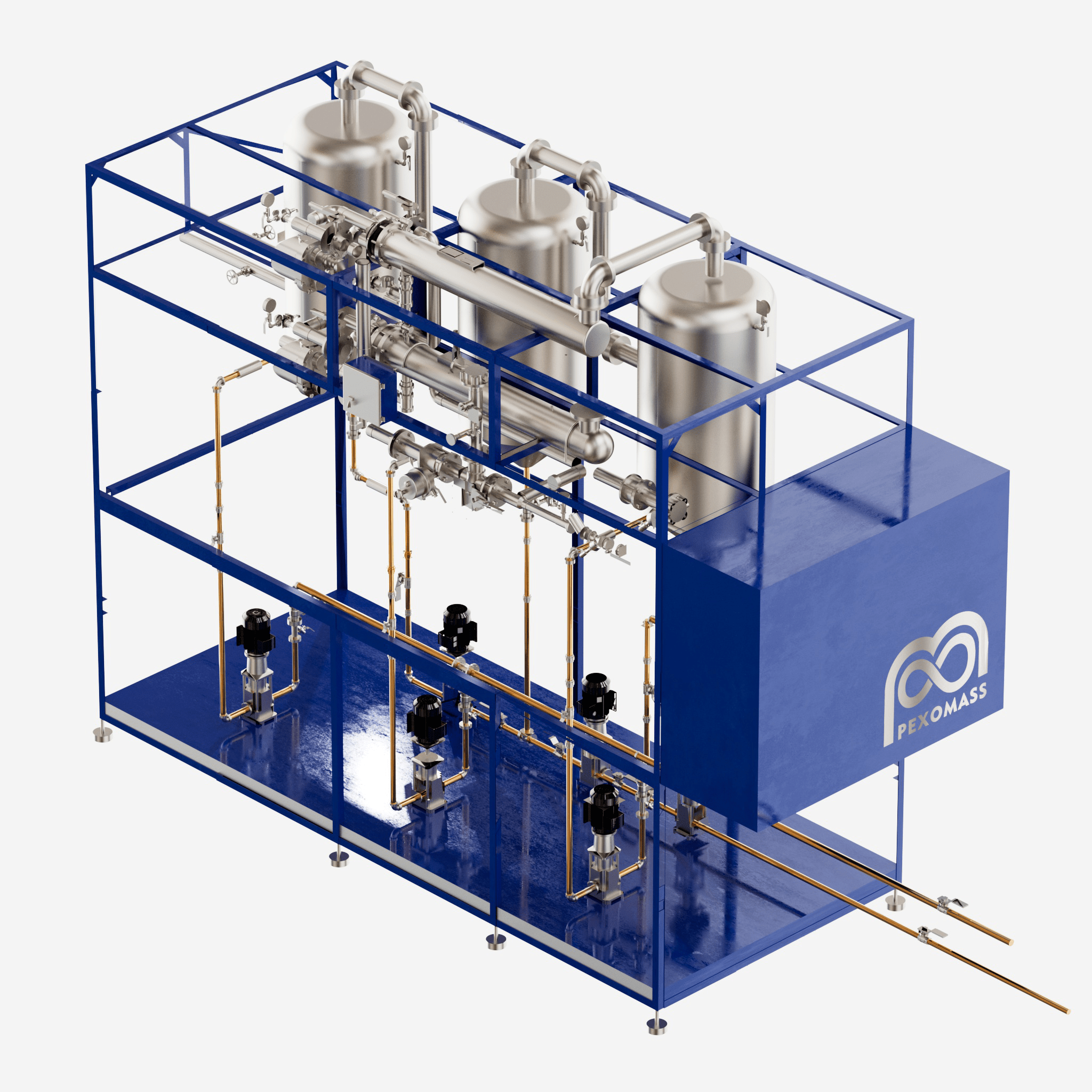Multi Effect Evaporator (MEE)

Multi Effect Evaporator (MEE)
A multi-effect evaporator is a type of industrial equipment used for concentrating solutions by evaporating the solvent (usually water) from a liquid mixture. It utilizes the principle of heat transfer to efficiently remove water or other solvents from a liquid, resulting in a more concentrated solution or a solid product. Multi-effect evaporators are commonly used in various industries, including food and beverage, pharmaceuticals, chemicals and wastewater treatment.
The term "multi-effect" refers to the fact that these evaporators consist of multiple evaporator vessels, or "effects", that are interconnected. The heat generated in one effect is used to drive the evaporation process in subsequent effects, increasing energy efficiency. This is achieved through the use of steam or another heat source that transfers heat from one effect to the next
- Operating Principle : Multi-effect evaporators operate on the principle of utilizing the latent heat of vaporization to remove solvent from a liquid mixture. As the liquid is heated, it reaches its boiling point, and the solvent vaporizes. The vapour is then condensed and collected, leaving behind a more concentrated solution or solid product.
- Multiple Effects : A multi-effect evaporator consists of multiple stages (effects) arranged in a series. Each effect operates at a lower pressure than the previous one, allowing the liquid to boil at successively lower temperatures. The vapour produced in one effect serves as the heat source for the subsequent effect.
- Energy Efficiency : One of the main advantages of a multi-effect evaporator is its energy efficiency. The heat from the vapour generated in one effect is used to drive the evaporation process in the next effect, reducing the need for external energy sources.
Types of Multi-Effect Evaporators